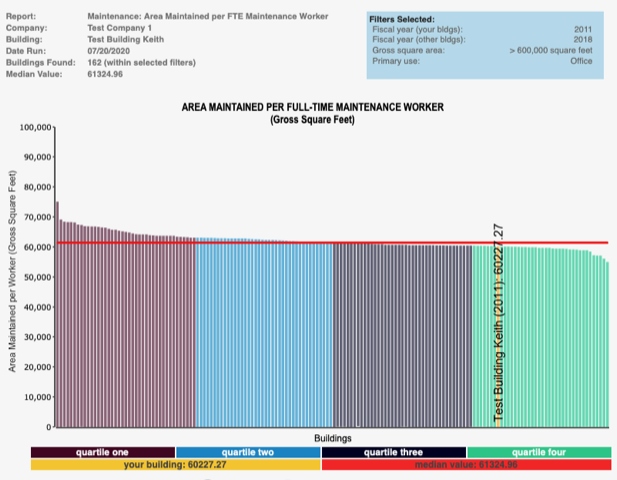July 2020 — In last month’s article we reviewed how to benchmark for janitorial staffing in a COVID-19 world. This month’s article reviews how you can benchmark maintenance staffing for either your internal staff or contractors. Since maintenance costs are usually between 80-85 percent labor and 15-20 percent materials having the right staffing level is the key to a properly maintained facility. As employees return to work, there are some key maintenance activities that need to occur.
If your building has been shut down during the crisis the CDC recommends the following:
- Evaluate the building and its mechanical and life safety systems to determine if the building is ready for occupancy. Check for hazards associated with prolonged facility shutdown such as mold growth, rodents or pests, or issues with stagnant water systems, and take appropriate remedial actions.
- Ensure that ventilation systems in your facility operate properly. For building heating, ventilation, and air conditioning (HVAC) systems that have been shut down or on setback, review new construction startup guidance provided in ASHRAE Standard 180-2018, Standard Practice for the Inspection and Maintenance of Commercial Building HVAC Systems.
- Increase circulation of outdoor air as much as possible by opening windows and doors if possible and using fans. Do not open windows and doors if doing so poses a safety or health risk for occupants, including children (e.g., a risk of falling or of breathing outdoor environmental contaminants such as carbon monoxide, molds, or pollens).
- To minimize the risk of Legionnaires’ diseaseand other diseases associated with water, take steps to ensure that all water systems and features (e.g., sink faucets, drinking fountains, decorative fountains) and water-using devices (e.g., ice machines, cooling towers) are safe to use after a prolonged facility shutdown.
These activities are all “project”-related “one-time” activities and should not be included in your maintenance budget. Most companies have funds available for storms or unusual damage and this where this type of activity should be charged.
As you reopen facilities, one of the most likely scenarios will be staggered shifts or days and partial use of the facility to keep employees socially distant. However, many HVAC systems cover large areas of the facility and shut down of unused areas will not be feasible. If various groups bring in “work from home (WFH)” employees one day a week and they continue to work from home the rest of the time, then you will still have to operate the majority of the facility every day of the week. We can see very little impact on maintenance staffing or activities due to staggered workforce activities. So, we can still use the existing benchmarks to see if the staffing is about right.
We have an example from FM BENCHMARKING to illustrate how easy and valuable the process should be and how you can avoid the problem of too much or too little staff. This approach allows you obtain the key output report of staffing per maintained area.
Figure 1 shows the staffing level performance compared with other office buildings that are greater in size than 600,000 GSF. Note that the range of staffing in the second and third quartiles is in a very tight range from 60,400 to 63,076 maintained square feet.

Figure 1 – Area Maintained per FTE
Filters: Type of facility: office; Size: greater than 600,000 maintained SF
Provided courtesy of FM BENCHMARKING
Our building is shown in yellow in the fourth quartile with a value of 60,226 SF maintained per worker. This should be evaluated to determine what could be done to improve the staffing level to the median.